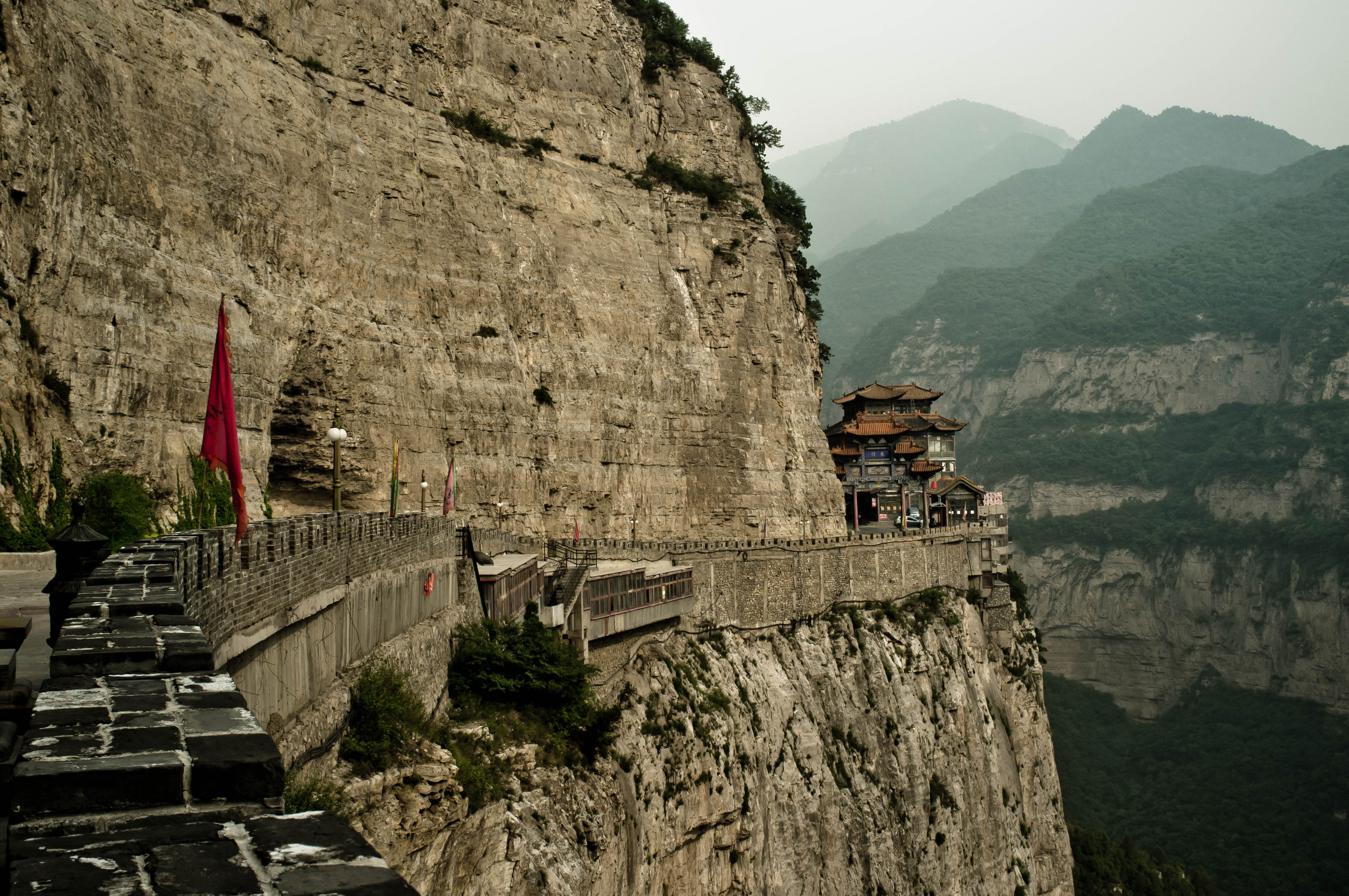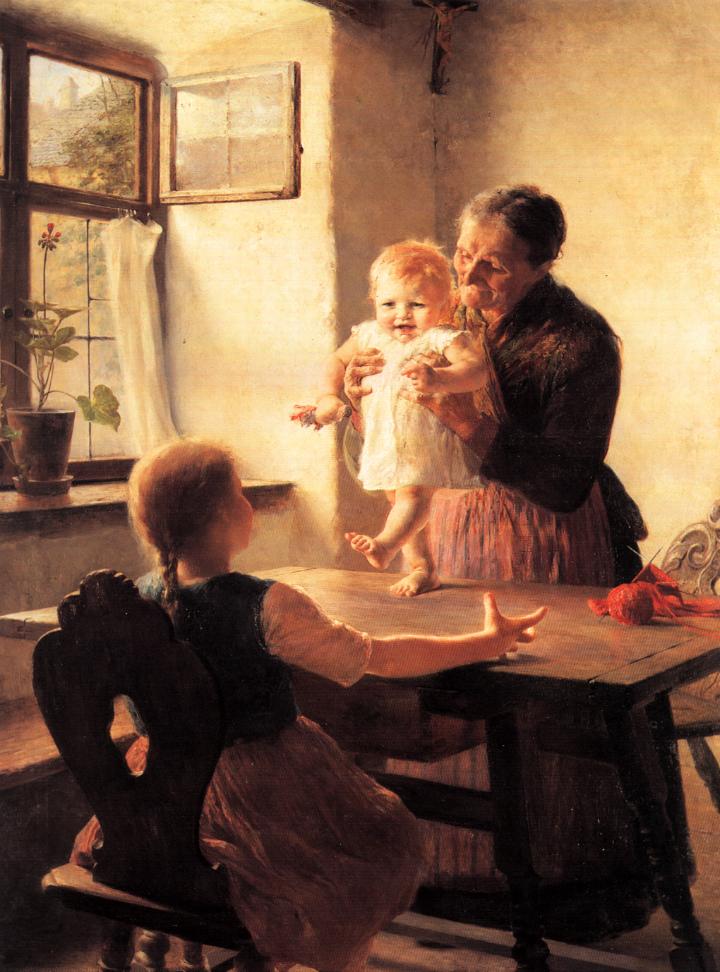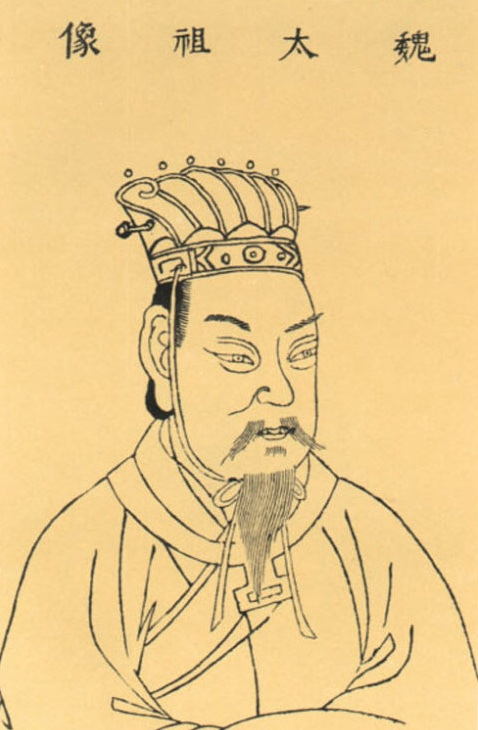|
Duke Hui Of Jin
Duke Hui of Jin (died 637BC), born Yiwu, was the duke of Jin (.650ŌĆō637BC) during the Spring and Autumn Period of China's Zhou dynasty. Life Early life Yiwu was one of the nine sons of Duke Xian. His mother was Xiao Rongzi. He was the younger sibling of Shensheng and Chong'er (later Duke Wen) and the older sibling of Xiqi. As part of her scheme to secure the succession to her son, the concubine Li Ji removed Xiqi's older siblings from the capital on the pretext of pacifying their territories. Prince Yiwu was sent to defend Erqu in what is now Ji County, Shanxi. After the death of Duke Xian in the ninth lunar month during 651BC, Li Ji placed the 15-year-old Xiqi on the throne and made Xun Xi chancellor to help him with administration. In the tenth lunar month of 651BC, before Duke Xian had even been properly buried, a Jin minister named Li Ke killed Xiqi. The chancellor Xun Xi then placed Zhuozi, the youngest son of Duke Xian, on the throne even though he was still ... [...More Info...] [...Related Items...] OR: [Wikipedia] [Google] [Baidu] |
Zhuozi (Jin)
Zhuozi (, died 651 BC) or Prince Zhuo () was for a month in 651 BC the ruler of the State of Jin during the Spring and Autumn period of ancient China. His ancestral name was Ji (Õ¦¼) and given name was Zhuo (ÕŹō). He was the son of Duke Xian of Jin, and his mother Shao Ji was the younger sister of Duke Xian's favored concubine Li Ji. When Duke Xian died in the ninth month of 651 BC, Crown Prince Xiqi, the son of Li Ji, ascended the throne. However, only a month later Xiqi was killed by the minister Li Ke (ķćīÕģŗ). Chancellor Xun Xi (ĶŹĆµü») then installed Zhuozi, Xiqi's younger half-brother and cousin, on the throne. But Zhuozi met the same fate as Xiqi: a month later he was also killed by Li Ke, and Xun Xi committed suicide. After Zhuozi's death Li Ke installed his older half-brother Prince Yiwu on the throne, known as Duke Hui of Jin Duke Hui of Jin (died 637BC), born Yiwu, was the duke of Jin (.650ŌĆō637BC) during the Spring and Autumn Period of China's Zhou dynasty. ... [...More Info...] [...Related Items...] OR: [Wikipedia] [Google] [Baidu] |
Li Ji (concubine)
Li Ji (; died 651 BCE) was a concubine and later wife of Duke Xian of Jin, ruler of the State of Jin between 676 and 651 BC during the Spring and Autumn period of ancient China. Li Ji is best known for starting the Li Ji Unrest which led to the suicide of Prince Shensheng. She also placed her own son Xiqi on the Jin throne after the death of Duke Xian. She was nicknamed as the "Witch of the Age" () because of her devious acts. Biography Li Ji was originally a native of Li Rong (ķ®¬µłÄ), one of the northern Rong tribes. In 672 BC, the fifth year of his reign, Duke Xian obtained two daughters of leader of the Li Rong tribe: Li Ji and her younger sister, Shao Ji (Õ░æÕ¦¼). Because of her beauty, Li Ji gained the favor of Duke Xian, therefore he had a desire to make Li Ji his main wife. Before doing so he asked the gods through divination whether or not it was wise to do this. The answer he received was that the outcome would not be good. He asked a second time and on receiving a posit ... [...More Info...] [...Related Items...] OR: [Wikipedia] [Google] [Baidu] |
Qi (Shandong)
Qi, or Ch'i in WadeŌĆōGiles romanization, was a state of the Zhou dynasty-era in ancient China, variously reckoned as a march, duchy, and independent kingdom. Its capital was Linzi, located in present-day Shandong. Qi was founded shortly after the Zhou overthrow of Shang in the 11th centuryBC. Its first marquis was Jiang Ziya, minister of King Wen and a legendary figure in Chinese culture. His family ruled Qi for several centuries before it was replaced by the Tian family in 386BC. In 221BC, Qi was the final major state annexed by Qin during its unification of China. History Foundation During the Zhou conquest of Shang, Jiang Ziya, a native of Ju County served as the chief minister to King Wu. After King Wu's death, Ziya remained loyal to the Duke of Zhou during the Three Guards' failed rebellion against his regency. The Shang prince Wu Geng had joined the revolt along with the Dongyi states of Yan, Xu, and Pugu. These were suppressed by 1039 BC and Jiang w ... [...More Info...] [...Related Items...] OR: [Wikipedia] [Google] [Baidu] |
Prince Chong'er
Duke Wen of Jin (697ŌĆō628BC), born Chong'er (literally "Double Ears"), was a scion of the royal house of Jin during the Spring and Autumn Period of Chinese history. He famously endured a long period of exile from his realm before finally being restored to power (r.636ŌĆō628BC) and rapidly leading Jin to hegemony over the other Chinese states of his time. He is a figure in numerous Chinese legends, including those about his loyal courtier Jie Zhitui, whose death is said to have inspired China's Cold Food and Qingming Festivals. Names "Duke Wen of Jin" is a posthumous name bestowed on him as part of his family's ancestral veneration. It literally means the "Cultured Duke of Jin". Duke Wen's given name was Chong'er. His clan name was Ji. Life Early life Prince Chong'er was born to Duke Xian of Jin in 697 BC. The '' Zuo Zhuan'' notes that "his ribs were all grown together," a sign of strength and leadership. Chong'er's half-brothers included Shensheng and Xiqi. While Shens ... [...More Info...] [...Related Items...] OR: [Wikipedia] [Google] [Baidu] |
Suicide By Hanging
Suicide by hanging is the intentional killing of oneself (suicide) via suspension from an anchor-point such as an overhead beam or hook, by a rope or cord or by jumping from a height with a noose around the neck. Hanging is often considered to be a simple suicide method that does not require complicated techniques; a study of people who attempted suicide by hanging and lived usually suggests that this perception may not be accurate. It is one of the most commonly used suicide methods and has a high mortality rate; Gunnell ''et al''. gives a figure of at least 70 percent. The materials required are easily available, making it a difficult method to prevent. In the International Statistical Classification of Diseases and Related Health Problems, suicides by hanging are classified under the code X70: "Intentional self-harm by hanging, strangulation, and suffocation.""Trends". Hanging is divided into suspension hanging and the much rarer drop hangingŌüĀŌĆēŌüĀŌĆöŌĆēthe latter can ... [...More Info...] [...Related Items...] OR: [Wikipedia] [Google] [Baidu] |
Chinese Suicide
China's suicide rates were one of the highest in the world in the 1990s; however, by 2011, China had one of the lowest suicide rates in the world. According to the World Health Organization, the suicide rate in China was 9.7 per 100,000 as of 2016. As a comparison, the suicide rate in the U.S. in 2016 was 15.3. Generally speaking, China seems to have a lower suicide rate than neighboring Korea, Russia and Japan, and it is more common among women than men and more common in the Yangtze Basin than elsewhere. A 2014 overview pointed at the economic crisis years (2007ŌĆō2008) as a period from which suicide rates surged globally. The study was about China's suicide rates which have been declining instead: in the 1990s China was among the countries with the highest suicide rates in the world (above 20 per 100,000), but by the global economic crisis they kept dropping as significantly (as they were by the end of 1990s) with the main force having been migration from rural to urban areas. ... [...More Info...] [...Related Items...] OR: [Wikipedia] [Google] [Baidu] |
Toddler
A toddler is a child approximately 12 to 36 months old, though definitions vary. The toddler years are a time of great cognitive, emotional and social development. The word is derived from "to toddle", which means to walk unsteadily, like a child of this age. Developmental milestones Toddler development can be broken down into a number of interrelated areas. There is reasonable consensus about what these areas may include: * Physical: growth or an increase in size. * Gross motor: the control of large muscles which enable walking, running, jumping and climbing. * Fine motor: the ability to control small muscles; enabling the toddler to feed themselves, draw and manipulate objects. * Vision: the ability to see near and far and interpret what is seen. * Hearing and speech: the ability to hear and receive information and listen (interpret), and the ability to understand and learn language and use it to communicate effectively. * Social: the ability to interact with the world throu ... [...More Info...] [...Related Items...] OR: [Wikipedia] [Google] [Baidu] |
Zhuozi
Zhuozi ( mn, ; ) is a county of Ulanqab prefecture-level city, which in turn is part of Inner Mongolia Inner Mongolia, officially the Inner Mongolia Autonomous Region, is an autonomous region of the People's Republic of China. Its border includes most of the length of China's border with the country of Mongolia. Inner Mongolia also accounts for a ..., China. It has an area of , and in 2020 had about inhabitants. Climate References County-level divisions of Inner Mongolia Ulanqab {{InnerMongolia-geo-stub ... [...More Info...] [...Related Items...] OR: [Wikipedia] [Google] [Baidu] |
Chinese Burial
The ''Book of Burial'' (Chinese: t , s , p ''Z├Āngsh┼½'') was a 4th or 5th-century AD work by the Taoist mystic Guo Pu. The work was a commentary on the now-lost ''Classic of Burial'' (t , s );''Feng Shui Today'',Classical Corner: 'Will it be eight pieces of pie, or nine squares of river turtle?'". 8 Sept 2012. Accessed 5 Nov 2012. as it survived and transmitted the classic's teachings, the ''Book of Burials principles relating the flow of '' qi'' to the appropriateness of a tomb's location were influential on the development of '' fengshui''. See also * ''Green Satchel Classic The ''Green Satchel Classic'' ( Chinese: t , s , p ''Q─½ngn├Īngj─½ng'') was a late-9th-century AD work attributed to the Tang Tang or TANG most often refers to: * Tang dynasty * Tang (drink mix) Tang or TANG may also ref ...'' References External links *The ''Zangshu'' or Book of Burial", trans. by Stephen Field Another translation by Zhang, ... [...More Info...] [...Related Items...] OR: [Wikipedia] [Google] [Baidu] |
Chancellor (China)
The grand chancellor (''zaixiang, tsai-hsiang''), also translated as counselor-in-chief, chancellor, chief councillor, chief minister, imperial chancellor, lieutenant chancellor and prime minister, was the highest-ranking executive official in the imperial Chinese government. The term was known by many different names throughout Chinese history, and the exact extent of the powers associated with the position fluctuated greatly, even during a particular dynasty. During the Six Dynasties period, the term denoted a number of power-holders serving as chief administrators, including ''zhongshun jian'' (Inspector General of the Secretariat), ''zhongshu ling'' (President of the Secretariat), ''shizhong'' (Palace Attendant), ''shangshu ling'' and ''puye'' (president and vice-president of the Department of State Affairs). History In the Spring and Autumn period, Guan Zhong was the first chancellor in China, who became chancellor under the state of Qi in 685 BC. In Qin, during the Warring ... [...More Info...] [...Related Items...] OR: [Wikipedia] [Google] [Baidu] |
Xun Xi , also known as Hunni, once a people from Central Asia who spoke an Iranian language
{{disambiguation, geo ...
Xun may refer to: China Note: in WadeŌĆōGiles, Xun is romanized Hs├╝n *Xun (surname) (ĶŹĆ), Chinese surname *Xun (instrument), Chinese vessel flute made of clay or ceramic * Xun, Hequ County (ÕĘĪķĢć), town in Hequ County, Shanxi, China *Xun County (µĄÜÕÄ┐), Henan, China Other *Xun language (other), name of several southern African Khoisan languages See also * ŪāKung people, of southwestern Africa * Xionites Xionites, Chionites, or Chionitae (Middle Persian: ''Xiy┼Źn'' or ''Hiy┼Źn''; Avestan: ''Xiiaona''; Sogdian ''xwn''; Pahlavi ''Xyon'') were a nomadic people in the Central Asian regions of Transoxiana and Bactria. The Xionites appear to be syno ... [...More Info...] [...Related Items...] OR: [Wikipedia] [Google] [Baidu] |
Chinese Calendar
The traditional Chinese calendar (also known as the Agricultural Calendar Š▓µøå; Õå£ÕÄå; ''N├│ngl├¼''; 'farming calendar' Former Calendar łŖµøå; µŚ¦ÕÄå; ''Ji├╣l├¼'' Traditional Calendar Ćüµøå; ĶĆüÕÄå; ''LŪÄol├¼'', is a lunisolar calendar which identifies years, months, and days according to astronomical phenomena. In China, it is defined by the Chinese national standard GB/T 33661ŌĆō2017, "Calculation and Promulgation of the Chinese Calendar", issued by the Standardization Administration of China on May 12, 2017. Although modern-day China uses the Gregorian calendar, the traditional Chinese calendar governs holidays, such as the Chinese New Year and Lantern Festival, in both China and overseas Chinese communities. It also provides the traditional Chinese nomenclature of dates within a year which people use to select auspicious days for weddings, funerals, moving or starting a business. The evening state-run news program ''Xinwen Lianbo'' in the P.R.C. continues to anno ... [...More Info...] [...Related Items...] OR: [Wikipedia] [Google] [Baidu] |





